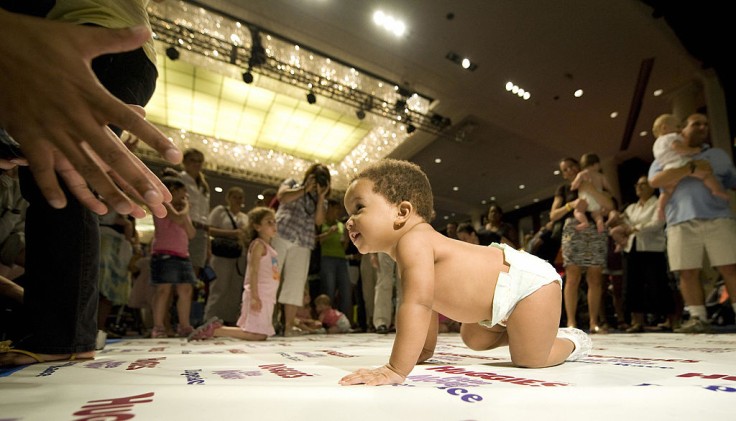
Until now, whether you've been pushing your baby in a stroller, lifting them in a carrier, or holding them in your arms, their mode of transportation has leaned entirely on others.
However, they will soon be determined to crawl, getting the ability to move freely from one point to another.
When Babies Begin to Crawl
Freely navigating their environment contributes the baby with a sense of approval and attainment, related substantially to their confidence.
It also opens up a world of current experimentation and paves the way for more difficult movements such as standing, walking, and eventually running.
Babies commonly begin crawling between 6 and 10 months, though individual improvement rates vary. Some babies may skip crawling generally and progress straight to pulling up, cruising, and walking.
Regardless of when your baby begins crawling, recognize that this accomplishment is substantial.
According to Dr. Rallie McAllister, co-author of The Mommy MD Guide to Your Baby's First Year, crawling marks an essential step toward independent flexibility.
Signs that your baby is eager to crawl include performing mini push-ups during tummy time, sitting without support, rolling over while lying down, actively looking around the room during tummy time, rocking forward and backward on all fours, and attempting to move forward using their arms and knees.
Various Styles of Crawling that Babies Adopt
When babies start to crawl, they may adopt various styles. While these styles may seem unconventional, they are generally nothing to be concerned about, as the key is the engagement in self-locomotion.
The American Academy of Pediatrics (AAP) outlines several baby crawling styles
- Commando crawl, also known as the "belly crawl," involves the baby keeping her tummy and legs on the floor while pulling herself forward with her arms.
- Bottom scoot entails the baby using her legs to slide around on her well-cushioned backside while learning to crawl.
- Classic crawl involves the baby pushing up onto her hands and knees from her tummy and moving forward by alternating opposite legs and arms.
- The roll sees the baby rocking back and forth on hands and knees until mastering forward motion.
- Tripod crawl has the baby moving with two hands and one knee doing the work, while the second leg takes a more relaxed approach.
- Bear crawl mimics a downward-facing dog yoga pose, with the baby waddling along on hands and feet.
- Leapfrog involves the baby adopting a hands-and-knees bridge pose and thrusting herself forward to move.
- Crab crawl has the baby using her arms to push herself backward or sideways, contrary to the intended forward motion.
Ways to Assist Your Baby as They Begin to Crawl
Crawling speeds can vary among babies, with some being fast crawlers and others using crawling for shorter distances, according to Dr. Katie Lockwood, a spokeswoman for the AAP and a board-certified pediatrician at Children's Hospital of Philadelphia (CHOP) in Philadelphia, Pennsylvania.
To encourage crawling, engage in tummy time activities and ensure a baby-proof environment.
Supervised tummy time helps form strength in the neck, shoulders, arms, and trunk, while baby proofing avoids mishap as babies test their surroundings.
Expect your crawling baby to express a range of emotions as they navigate their surroundings, from adventure to failure and occasional dissatisfaction.
Be a functioning participant in their expedition, practicing patience and bringing decisive confidence.
If the baby hasn't started crawling by 12 months, or if there are considerations about their flexibility, it's advisable to consult with a pediatrician for guidance.